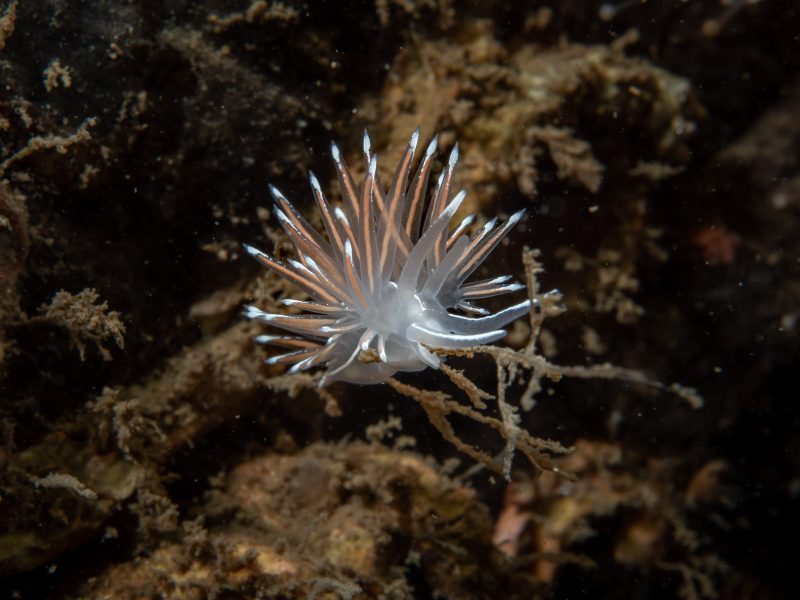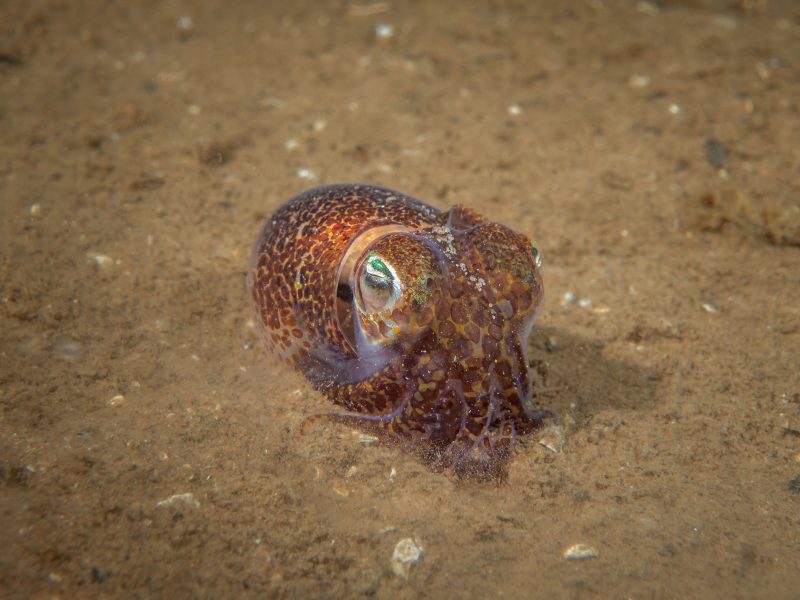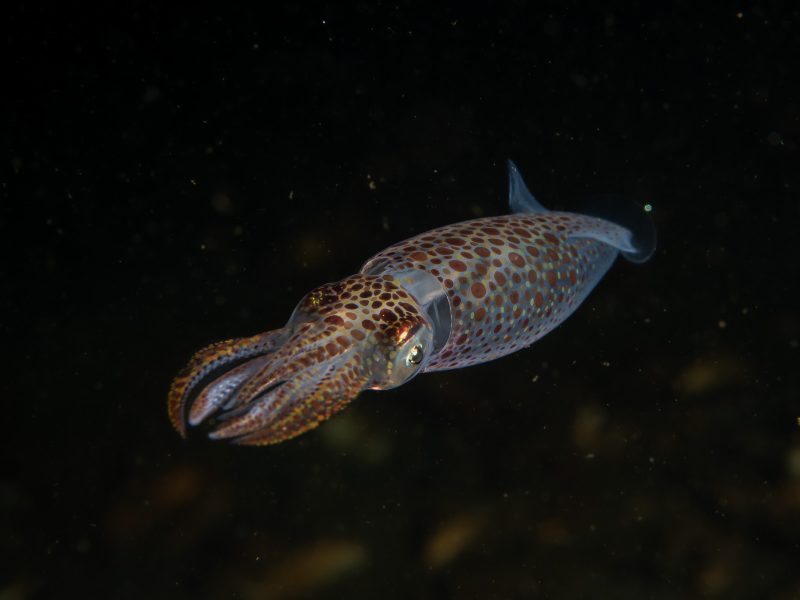Wildlife Wonders Found Underwater in Scotland’s Lochs

When you think of Scotland what comes to mind? Perhaps, epic mountain ranges, majestic lochs, or historic castles.
But what about what lies beneath the waves?


I think it’s fair to say Scotland’s beauty is well documented, but a whole part of our wee country has been overlooked for too long; our underwater world (and I don’t mean the elusive, mythical Nessie)!

So, Scotland isn’t exactly the diving capital of the world, but you might be surprised to find there is some spectacular nature hiding beneath our murky grey waters… if you can brave the cold!
Full disclaimer: I’m no expert in diving or marine biology. I’m someone who has fallen in love with Scotland’s marine life and developed a real passion for showing off our unbelievable, and very underappreciated, aquatic world.
Diving is something I always wanted to do from a young age, but I never really envisaged myself in the freezing cold lochs of home, and therein lies the first big challenge of diving in Scotland.

Even during our summer, the water temperature barely gets above 12oC and in winter… well let’s just say I’ve had to break the ice on more than one occasion. But that’s what dry suits and thermals were designed for.
Alfred Wainwright famously wrote: “There’s no such thing as bad weather, only unsuitable clothing” and it can be applied to diving as well.
With the right kit, there’s no reason not to go exploring. The biggest issue we find actually, and it is a real pain for photography, is visibility.

It could be a perfect day on the surface but put your head beneath the waves and you could be struggling to see your hand held out in front of your face.
There are no guarantees when diving here, but I think that’s part of the allure and sense of adventure. The unpredictability can be frustrating, but at the same time, it keeps me coming back time and time again.
You might find the ‘normal’ life; crabs, squat lobsters, etc., but you could equally find the elusive octopus, nudibranch, and bobtail squid.
People look out at the dreich (that’s a good Scottish word for dreary and bleak) waters of our coastline and lochs and often think there can’t be much in there in terms of life and colour.

I’ll hold my hands up – I did too until I started diving, but that couldn’t be further from the truth!
I’m not saying we’ll ever quite match the cacophony of colours you’ll see in more exotic locations like the Maldives, but there’s a lot more than you might expect.
There have genuinely been so many highlights and encounters with nature, probably too many to recount in just one article, so I’ve tried to pick a special few.
Crabs
Crabs might not come across as the most exciting marine animal, and they’re definitely a species ‘non-divers’ can see pretty easily.

However, when you get to observe them underwater in their natural habitats you see them in a whole new light, literally. It can be quite dark so a good torch is a must-have piece of kit.
Watching them scuttling across the seabed, interacting with other crabs and other underwater inhabitants is fascinating.
I think we have a habit of assigning human emotions to animals, and I admit I do it for crabs.

They’re so much fun to watch and each type seems to have its own personality: the stand-offish, almost aggressive shore and velvet swimming crab, the lazy/lethargic edible crab, and the timid, unsure hermits.
Anemone
One of the most beautiful and colourful marine animals in Scottish waters is the anemone. There are so many different types – fireworks, dahlias, and sea loch, to name a few. And they come in so many different shapes, sizes, and colours!

The patterns and shapes they make, as they glint in the light of the torches and with the movement of the water, is magical.
I honestly had no idea we had such vibrant marine life here at home.
I thought these kinds of creatures only lived in places like the Maldives or the Great Barrier Reef – I never expected to find them in the murky waters off Millport in the Clyde!
Nudibranchs
Nudibranch! You know you’ve had a good day when you’ve snapped one of these wee sea slugs!
Like the anemone, they come in many varieties and colours, and these little guys are just incredibe, if you can spot them!

If you think macro photography is difficult on land, you should try it at 20m underwater with the current throwing you and the nudibranch around.
I’m terrible at spotting nudibranchs, so I’m very lucky to have dive buddies who have the eyes of a hawk and can pick them out for me.

Honestly, they are the most frustrating animal to shoot underwater.
At often less than 3cm in size, getting them in focus can be really difficult, but it’s worth the effort. When you review the images and find that single shot in focus, the feeling is amazing!
Dogfish shark
You might not think it, but Scotland does have a pretty common shark or two. While they’re not ‘Jaws’, the dogfish (or catsharks) have their own appealing attributes.

Their generally docile nature makes them perfect subjects to photograph, the pattern of their skin is different on each, but it’s their eyes that are really breathtaking!
I’ve never seen anything like them.

Each one is unique and magical, and I am at a loss for words to describe them, but it’s almost like looking into a night-sky full of stars and galaxies.
Little Cuttle/Bobtail squid
The little cuttle/bobtail squid are technically two different species, but I find it really difficult to tell the two apart. They’re also a prime example of never knowing what you’ll find when you dive beneath our waterline.

Neither is necessarily uncommon here, but they’re usually nocturnal.
So, coming across one nonchalantly out for its morning stroll across the seabed, only 8m down on a bright Sunday morning was very special!
They are genuinely one of the most amazing animals I’ve ever had the opportunity to observe in person – I’d seen them on TV, but never expected to find them hiding in the waters around Scotland.

The way they move, burrow into the seabed, and even change colour; it’s like watching a creature from another world. I guess, in a way, they are!
Octopus
Is it common knowledge we have octopuses here in Scotland? I’m not too sure but, like a lot of things, I certainly had no idea we had them until I started diving.
I’m not saying you’d expect to see them on every dive, but depending on where you are diving around our coastline they aren’t as uncommon as you might think.

Being the masters of disguise, they are also extremely tricky to spot, and photograph.
I don’t know if there is something about their skin, but all my images, even the ones I’ve been able to spend some time ‘setting up’ have come out grainy and far worse than I’d expect them to.
These incredible creatures are just stunning to observe in person.
Obviously, I’ve seen plenty of videos of them, but to be able to watch them first-hand in their natural habitat, and in my homeland no less, is such a privilege.
Often, they’re found tucked away in the nooks and crannies of the rocks of the seabed, but I’ve been exceptionally fortunate to spend a good 15-20 minutes with one, out in the open, in the middle of the Clyde.
Words can’t describe how special that time was.
Squid
When you say the word squid people often think about the massive, almost mythical sea monsters from legends and it’s definitely not something you’d associate with Scotland. Besides, the mythical sea monster position has already been filled.
So, when my dive buddy started flashing their torch frantically at me during a dive in Loch Long and pointing to something mid-water, I certainly wasn’t expecting a tiny squid to swim into view.

At less than 2cm these common European squids won’t be terrifying unfortunate sailors and dragging their ships down to Davy Jones Locker, but they gave me a real buzz.
If I thought the tiny nudibranch was difficult to photograph as they slowly meandered across the seabed, the squid took it to a whole new level.
I don’t usually “blow my own trumpet”, but I am particularly proud of some of my squid shots.

With these tiny wee guys zooming around mid-water they certainly pushed my skills to the maximum. I can’t take all the credit as my camera has exceptionally good focus tracking and burst mode that did a lot of the work for me.
It would appear they are also much like buses. You wait ages for one and several come along at once.
I’ve been diving for nearly 7 years here in Scotland and had never once seen a squid, in the space of 2 weeks, I encountered them on 3 different dive days in 3 different dive sites.
Wolffish
Wow! I hadn’t even heard of these until someone posted a photo on social media about a “wolfie workshop” taking place off the east coast around St Abbs.

After a quick Google search, I realised I simply had to see these bizarre creatures.
When diving in Scotland, local knowledge is key, and where to find these totally unique animals is a perfect example of that.
According to my research, they tend to be found in the cold northern seas, mainly from 60m down to 300m, far out of the limits of recreational diving.
However, the seas off Scotland’s east coast offer a unique opportunity to find them nestled in the rocks, sometimes as shallow as only 10m down.

During winter wolffish tend to head into deeper waters to mate and lay eggs but come summer they often return to the same crevices as the previous year. With their unique facial features, it is quite easy to identify individuals.
Litter pollution
For all the incredible marine life I get to see, there are one or two other things I’m less happy to shoot but have found myself starting to go out of my way to photograph litter.
Over the past two years, I’ve noticed a rise in the number of plastic bottles and cans scattered across our seabed. Most of our dive sites are close to roads so it’s not hard to figure out where some of it comes from.
It’s really disheartening to see and I’m finding myself shooting at least one “litter interaction” per dive now.

We generally try to lift the bottles and cans, but the issue we now find is that marine life is starting to use them as habitats to cling to.
This raises the moral conundrum of; do we lift the litter and in turn disturb the wildlife (the number one thing NOT to do when observing marine life), or do we leave the litter in place for the life to use?
The photographs offer a stark reminder of the impact we humans are having on an ecosystem we don’t inhabit!
In conclusion
Scuba diving in Scotland isn’t easy; you never know exactly what to expect, what the conditions will be like, what to prepare for, or if you’ll find anything ‘exciting’. However, it is that unknown that keeps me, and many others, coming back for more.
Underwater photography here isn’t easy either. For every acceptable image I find, I’ve got at least 25-30 terrible ones (and that’s probably being generous).
But, the anticipation of that one shot is what encourages me, and pushes me to keep going and keep exploring.





